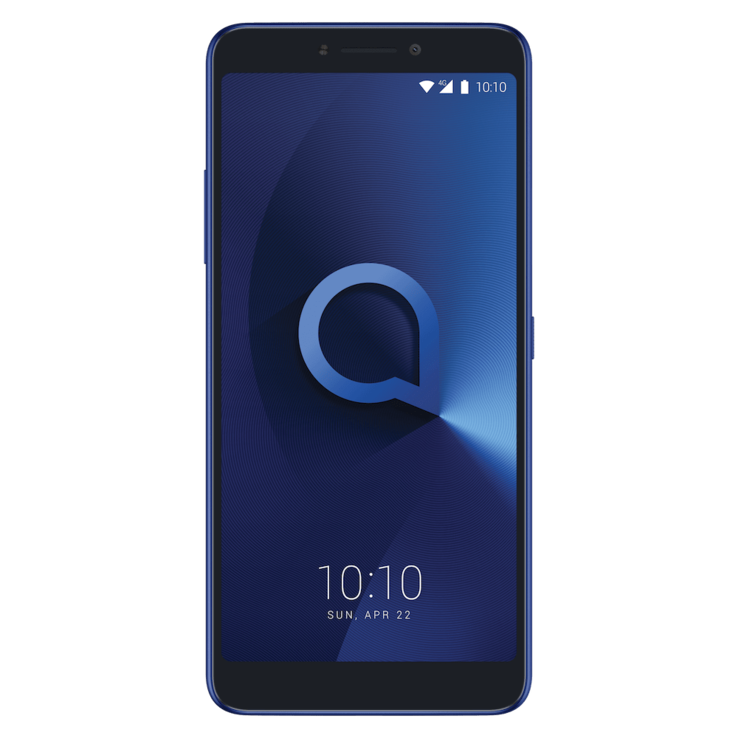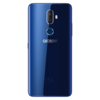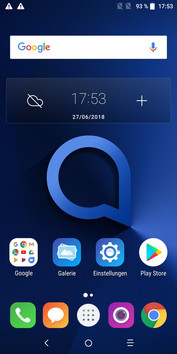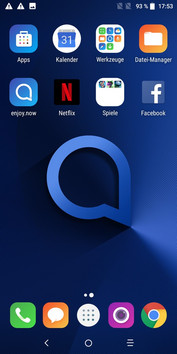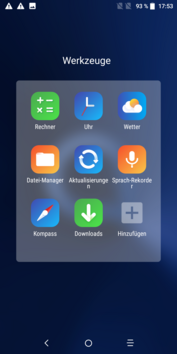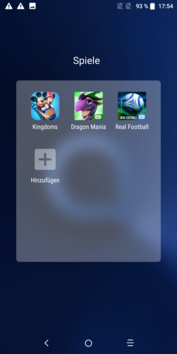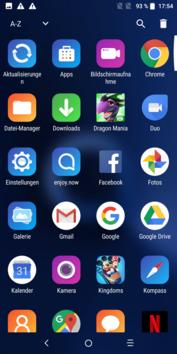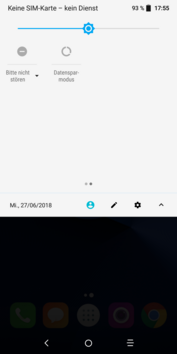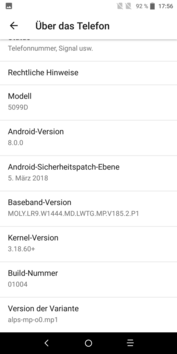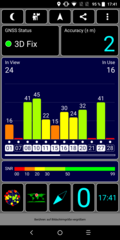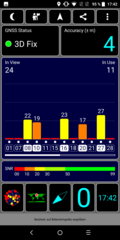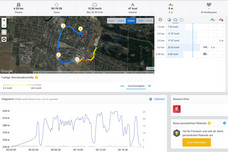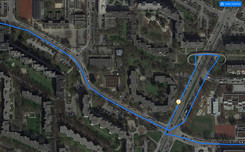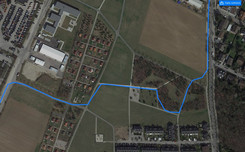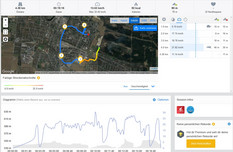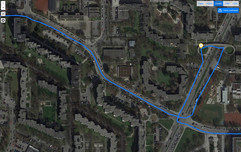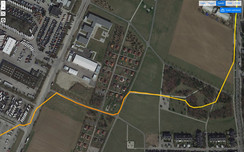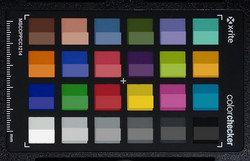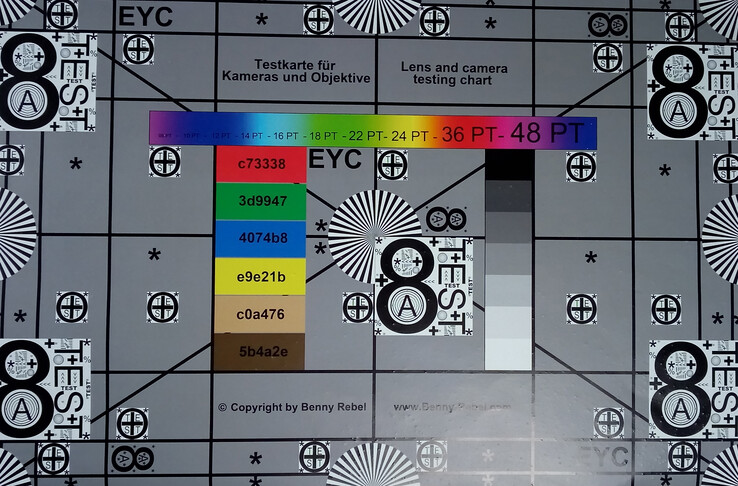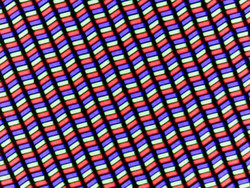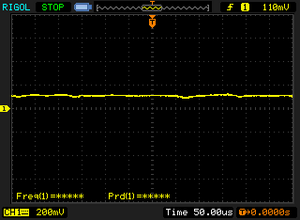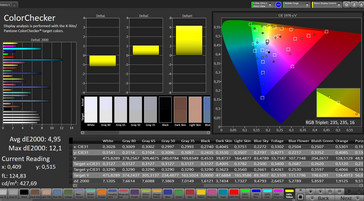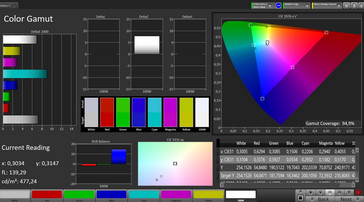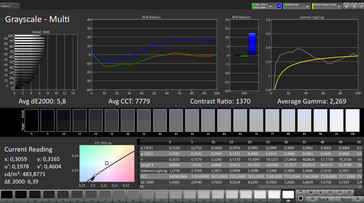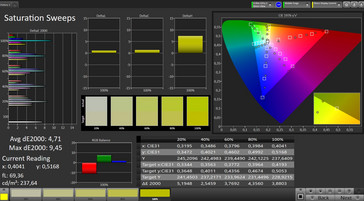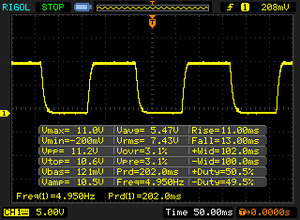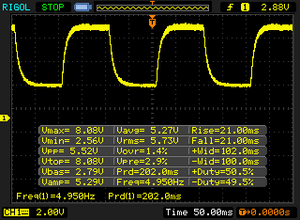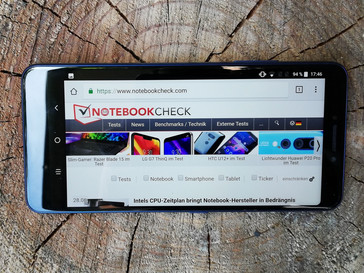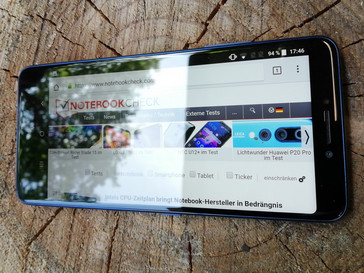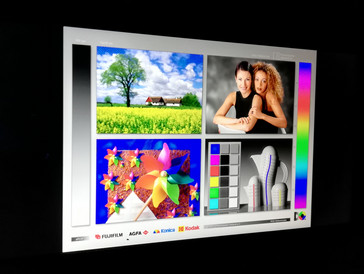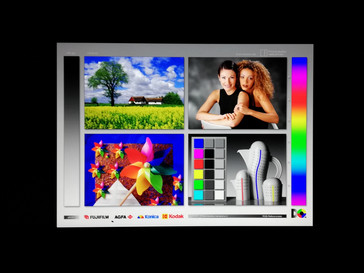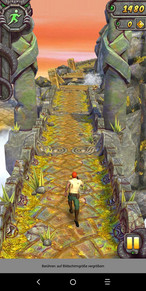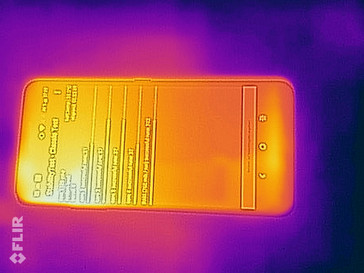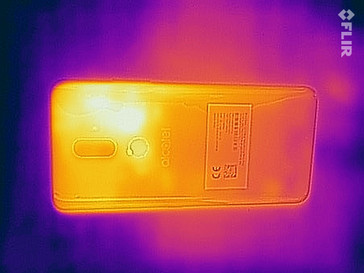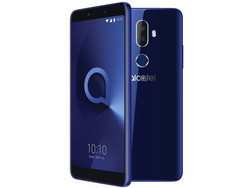Alcatel 3V Smartphone Review
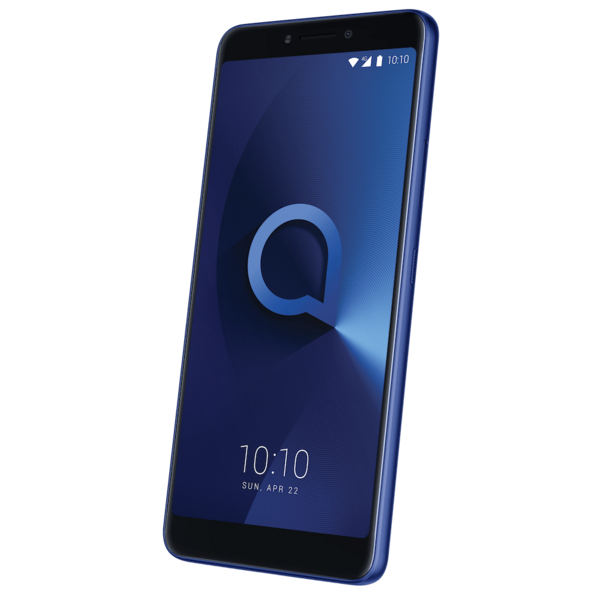
Since dropping the OneTouch moniker from its smartphones, Alcatel has focused on releasing budget devices like the Alcatel Shine Lite. This emphasis has changed following the release of the new Alcatel 3 Series, a set of four mid-range devices for 2018.
In this review we will be focusing on the Alcatel 3V, a mid-range device that is powered by a MediaTek MT8735 SoC, an ARM Mali-T720 MP2 GPU, 2 GB RAM and 16 GB of internal storage. The 3V also simultaneously supports two nano-SIM cards and microSD cards up to 128 GB.
The sub 200-Euro (~$233) smartphone market is a saturated one, so we have chosen to compare the 3V against comparably priced and performing devices. These are the Honor 7C, the Gigaset GS270 Plus, the Xiaomi Redmi 5 Plus and the HTC Desire 12.
Case
The 3V has a plastic case with a glossy finish. The 3V is available in black, blue and gold. The black and blue variants have black display bezels while the gold variant has white bezels.
The workmanship is impressive, although the edges between the front and rear of our test device could be smoother. The hardware buttons are not of equal quality either. While the power button and SIM/microSD card tray sit firmly, it is easy to wiggle the volume rocker. The bottom of the back case gives way under pressure and we could hear a quiet creaking sound when twisting the device.
Connectivity
The 3V is powered by a MediaTek MT8735 SoC that integrates a quad-core ARM-A53 CPU and an ARM Mali-T720 MP2 GPU. This is combined with 2 GB of RAM and 16 GB of internal storage. The 3V is a dual-SIM device that supports simultaneous microSD card expansion too, which isn’t always the case with mid-range devices. The 3V supports up to 128 GB microSD cards but can only format them as external storage, which means that apps can only be stored on the internal memory. You can plug in USB thumb drives via the OTG-capable Micro USB 2.0 port too.
The 3V has a 3.5 mm jack as well, which isn’t always a given. There is an audible click when headphones are connected, with the port holding them firmly in place.
Software
The 3V ships with Android Oreo 8.0, with our test device running Android security patch level March 5, 2018. Alcatel includes plenty of preinstalled software on the 3V. There is the One-Touch app store, Microsoft Office, Netflix, Facebook, some games and a suite of Alcatel apps. Alcatel also includes an enjoy.now app which allows users to register their devices to receive special offers, news, tutorials and tips as to how best use their device. All additional software can easily be uninstalled.
The 3V supports multiple user accounts, which are accessible in Settings.
Communication & GPS
The 3V supports GSM, UMTS and LTE Cat.4 for connecting to mobile Internet. The MediaTek MT8735 SoC theoretically supports up to 150 Mbps download and 50 Mbps upload speeds. Our test device cannot achieve this in practice though, with the mobile network and Wi-Fi signal frequently dropping off sooner than our comparison devices.
The 3V supports IEEE 802.11 a/b/g/n Wi-Fi, which means it can connect to both 2.4 GHz and 5 GHz Wi-Fi networks. Broadly, transmission speeds are unimpressive, with our test device being around 50% slower than the class average. However, the 3V fares much better against our comparison devices, where it is at least 50% faster in iperf3 Client tests than our best comparison device.
| Networking | |
| iperf3 transmit AX12 | |
| Alcatel 3V | |
| HTC Desire 12 | |
| Gigaset GS270 Plus | |
| Xiaomi Redmi 5 Plus | |
| Honor 7C | |
| iperf3 receive AX12 | |
| Alcatel 3V | |
| HTC Desire 12 | |
| Gigaset GS270 Plus | |
| Xiaomi Redmi 5 Plus | |
| Honor 7C | |
The 3V uses GLONASS and GPS for location services. Location accuracy is impressive for a device at this price, with our test device being able to locate us to an accuracy of four meters when inside and two meters when outside.
We took the 3V on a bike ride to test its location accuracy against a professional navigation device, the Garmin Edge 520. Our test device performed reasonably well, but there were some dropouts that affected the overall distance recorded. Our test device recorded 180 meters more than the Garmin, which is around a 4% discrepancy. Overall, the 3V should be suitable for all general navigation tasks but not those that require higher precision.
Telephone Function & Call Quality
The 3V uses the Google Phone app for handling calls and managing contacts. Call quality is adequate for a device at this price, but the earpiece is comparatively quiet, which makes it difficult to hear calls in areas of background noise. Worse still, voices quickly sound scratchy if either person starts speaking too loudly.
Call quality is much better with the included headphones. The 3V does not seem to support VoLTE or VoWiFi either.
Cameras
The 3V has dual 12 MP & 2 MP rear-facing cameras and a 5 MP front-facing camera. The front-facing camera takes adequate selfies, but images often look slightly out of focus and lack details when trying to take a selfie in daylight. The camera app has two slides that allow you to soften the image and adjust the color temperature before taking a shot.
The main camera has two sensors. The 12 MP sensor is the larger of the two and has an f/2.2 aperture and 1.25 μm pixel size. By contrast, the secondary 2 MP camera has an f/2.4 aperture and assists the 12 MP camera in creating bokeh effect photos.
Panoramic shots look good, but the camera only moderately compensates for large differences in brightness throughout an image. The main camera reproduces dark areas so darkly that they jar with the rest of the image. The main camera captures details relatively well, but details look muddier outside of the camera’s area of focus.
Macro shots look good too, with the main camera capturing images sharply when using the camera in good lighting. The contrast between dark and light areas is stronger than it should be though. Our test shot is overexposed, but there is at least the impression that it was taken in summer.
The high sensitivity of the main camera is clearly apparent when taking low-light shots though. The 3V’s low-light performance is better than even our Sony A77 comparison camera.
Unfortunately, the Alcatel camera app is scant on photo options. There is no way to adjust brightness, white balance, shutter speed or ISO values. There are various modes and filters, but you will need to download another camera app if you want to change settings for specific shots.
We then tested the 3V against ColorChecker to measure how accurate the device reproduces colors. Our tests in controlled lighting conditions demonstrate that the 3V reproduces colors too darkly, especially with gray and black tones.
The photo of our test device came out very dark too. The level of detail is adequate though, with fine lines being clearly visible. Even line edges are not affected by blurriness, which is impressive for a device at this price.
Accessories & Warranty
The 3V comes with a charger, headphones, a protective case, a SIM tool and a USB Type-A to Micro USB cable. The headphones sound good enough to be used for listening to music and for making phone calls.
Alcatel does not offer any accessories specific to the 3V.
The 3V comes with 24 months manufacturer’s warranty. Please see our Guarantees, Return policies and Warranties FAQ for country-specific information.
Input Devices & Operation
Alcatel has set Google Gboard as the default keyboard. Gboard is one of the most popular keyboards for Android and has been downloaded over 500 million times at the time of writing. There are plenty of other reputable keyboards available on the Google Play Store if Gboard doesn’t meet your needs though.
Our test device’s touchscreen worked reliably throughout our tests. The touchscreen has a smooth and glossy finish, which helps make drag and drop movements easy to execute. The display does take slightly too long to rotate though.
The 3V can be secured with either a PIN, a pattern lock, your face or by fingerprints. You must have a PIN or a pattern lock as a secondary method of security if you enable fingerprint unlocking. This is also the case with face unlock. Face unlock is fast, but it is not as secure as the technology used in the Apple iPhone X; the 3V’s face unlock could be easily spoofed. The fingerprint sensor works well too, but it requires precise positioning of your finger for the fingerprint to be registered.
Display
The 3V has a 6.0-inch IPS display with a 2160x1080 native resolution and a 2:1 aspect ratio. You may see 2:1 aspect ratios referred elsewhere as 18:9.
Our test device achieved an average maximum brightness of 461.9 cd/m² using X-Rite i1Pro 2. This is a relatively low value but one which is marginally lower than most of our comparison devices. Overall, the 3V has a display that is bright enough for a device at this price.
| |||||||||||||||||||||||||
Brightness Distribution: 90 %
Center on Battery: 463 cd/m²
Contrast: 1689:1 (Black: 0.28 cd/m²)
ΔE ColorChecker Calman: 4.95 | ∀{0.5-29.43 Ø4.77}
ΔE Greyscale Calman: 5.8 | ∀{0.09-98 Ø5}
94.9% sRGB (Calman 2D)
Gamma: 2.27
CCT: 7779 K
| Alcatel 3V IPS, 2160x1080, 6" | Honor 7C IPS, 1440x720, 6" | Gigaset GS270 Plus IPS, 1920x1080, 5.2" | Xiaomi Redmi 5 Plus IPS, 2160x1080, 6" | HTC Desire 12 IPS, 1440x720, 5.5" | |
|---|---|---|---|---|---|
| Screen | -22% | -17% | 4% | 10% | |
| Brightness middle (cd/m²) | 473 | 392 -17% | 487 3% | 620 31% | 502 6% |
| Brightness (cd/m²) | 462 | 403 -13% | 476 3% | 612 32% | 499 8% |
| Brightness Distribution (%) | 90 | 85 -6% | 89 -1% | 96 7% | 84 -7% |
| Black Level * (cd/m²) | 0.28 | 0.61 -118% | 0.35 -25% | 0.57 -104% | 0.2 29% |
| Contrast (:1) | 1689 | 643 -62% | 1391 -18% | 1088 -36% | 2510 49% |
| Colorchecker dE 2000 * | 4.95 | 5.4 -9% | 6.39 -29% | 3.46 30% | 5.4 -9% |
| Colorchecker dE 2000 max. * | 12.1 | 9.7 20% | 14.24 -18% | 7.88 35% | 10.8 11% |
| Greyscale dE 2000 * | 5.8 | 4.2 28% | 8.6 -48% | 3.9 33% | 6.2 -7% |
| Gamma | 2.27 97% | 2.59 85% | 1.91 115% | 2.073 106% | 2.07 106% |
| CCT | 7779 84% | 6734 97% | 7366 88% | 7230 90% | 7660 85% |
* ... smaller is better
Screen Flickering / PWM (Pulse-Width Modulation)
| Screen flickering / PWM not detected | |||
In comparison: 53 % of all tested devices do not use PWM to dim the display. If PWM was detected, an average of 8091 (minimum: 5 - maximum: 343500) Hz was measured. | |||
The 3V has a comparatively impressive black value though, with its score of 0.28 cd/m² being higher than all our comparison devices except for the HTC Desire 12, which has a 29% lower black value. The low black value is of a benefit to the contrast ratio too. The 3V achieved a 1,689:1 contrast ratio in our tests, which is only bettered by the Desire 12; the 3V has a higher contrast ratio than all other comparison devices.
Display Response Times
| ↔ Response Time Black to White | ||
|---|---|---|
| 24 ms ... rise ↗ and fall ↘ combined | ↗ 11 ms rise | |
| ↘ 13 ms fall | ||
| The screen shows good response rates in our tests, but may be too slow for competitive gamers. In comparison, all tested devices range from 0.1 (minimum) to 240 (maximum) ms. » 53 % of all devices are better. This means that the measured response time is worse than the average of all tested devices (20.2 ms). | ||
| ↔ Response Time 50% Grey to 80% Grey | ||
| 42 ms ... rise ↗ and fall ↘ combined | ↗ 21 ms rise | |
| ↘ 21 ms fall | ||
| The screen shows slow response rates in our tests and will be unsatisfactory for gamers. In comparison, all tested devices range from 0.165 (minimum) to 636 (maximum) ms. » 66 % of all devices are better. This means that the measured response time is worse than the average of all tested devices (31.6 ms). | ||
The 3V’s display has a glossy finish, which limits the extent to which the device can be used outside in direct sunlight. We found that the screen is difficult to read when direct sunlight hits even at maximum display brightness. The maximum brightness is sufficient to use the display in shady areas or on cloudy days though.
Performance
The 3V is powered by a MediaTek MT8735 SoC. The MT8735 integrates a quad-core ARM-A53 CPU and an ARM Mali-T720 MP2 GPU. Alcatel combines this with 2 GB of RAM and 16 GB of eMMC flash memory. The hardware is adequate for a mid-range device, but other manufacturers have started to offer devices with 3 GB of RAM and 32 GB of internal storage for the same money as the 3V.
The 3V performs slightly better in benchmarks than the average of MT8735 devices that we have tested, but the 3V is far slower than our comparison devices. Our test device would not run AnTuTu v7 or GFXBench 4.0 for some reason. We found no issues with other apps in daily use, but opening apps and menus always take slightly longer than we would like.
| AnTuTu v6 - Total Score (sort by value) | |
| Alcatel 3V | |
| Honor 7C | |
| Gigaset GS270 Plus | |
| Xiaomi Redmi 5 Plus | |
| HTC Desire 12 | |
| Average Mediatek MT8735 (34009 - 36177, n=3) | |
| PCMark for Android | |
| Work performance score (sort by value) | |
| Alcatel 3V | |
| Honor 7C | |
| Gigaset GS270 Plus | |
| Xiaomi Redmi 5 Plus | |
| Average Mediatek MT8735 (3617 - 3948, n=3) | |
| Work 2.0 performance score (sort by value) | |
| Alcatel 3V | |
| Honor 7C | |
| Gigaset GS270 Plus | |
| Xiaomi Redmi 5 Plus | |
| HTC Desire 12 | |
| Average Mediatek MT8735 (2980 - 2981, n=2) | |
| GFXBench 3.0 | |
| on screen Manhattan Onscreen OGL (sort by value) | |
| Alcatel 3V | |
| Honor 7C | |
| Gigaset GS270 Plus | |
| Xiaomi Redmi 5 Plus | |
| HTC Desire 12 | |
| Average Mediatek MT8735 (2.9 - 6.2, n=3) | |
| Average of class Smartphone (18 - 166, n=156, last 2 years) | |
| 1920x1080 1080p Manhattan Offscreen (sort by value) | |
| Alcatel 3V | |
| Honor 7C | |
| Gigaset GS270 Plus | |
| Xiaomi Redmi 5 Plus | |
| HTC Desire 12 | |
| Average Mediatek MT8735 (3 - 4.3, n=3) | |
| Average of class Smartphone (12 - 606, n=155, last 2 years) | |
| GFXBench 3.1 | |
| on screen Manhattan ES 3.1 Onscreen (sort by value) | |
| Alcatel 3V | |
| Honor 7C | |
| Gigaset GS270 Plus | |
| Xiaomi Redmi 5 Plus | |
| HTC Desire 12 | |
| Average Mediatek MT8735 (2.5 - 4.3, n=3) | |
| Average of class Smartphone (11 - 166, n=156, last 2 years) | |
| 1920x1080 Manhattan ES 3.1 Offscreen (sort by value) | |
| Alcatel 3V | |
| Honor 7C | |
| Gigaset GS270 Plus | |
| Xiaomi Redmi 5 Plus | |
| HTC Desire 12 | |
| Average Mediatek MT8735 (1.9 - 2.5, n=3) | |
| Average of class Smartphone (8.4 - 413, n=155, last 2 years) | |
The 3V performed reasonably well in our browser benchmarks and sits in the middle of our comparison devices in these benchmarks.
Browser performance on our test device is smooth, but media heavy websites take slightly longer to load than other websites.
| JetStream 1.1 - Total Score | |
| Xiaomi Redmi 5 Plus (Chrome 66) | |
| Honor 7C (Chrome 66) | |
| Gigaset GS270 Plus (Chrome 66) | |
| Alcatel 3V (Chrome 67) | |
| Average Mediatek MT8735 (15.4 - 18.3, n=3) | |
| HTC Desire 12 (Chrome 66.0.3359.158) | |
| Octane V2 - Total Score | |
| Average of class Smartphone (2228 - 121337, n=195, last 2 years) | |
| Xiaomi Redmi 5 Plus (Chrome 66) | |
| Honor 7C (Chrome 66) | |
| Alcatel 3V (Chrome 67) | |
| Gigaset GS270 Plus (Chrome 66) | |
| HTC Desire 12 (Chrome 66.0.3359.158) | |
| Average Mediatek MT8735 (2290 - 3312, n=3) | |
| Mozilla Kraken 1.1 - Total | |
| HTC Desire 12 (Chrome 66.0.3359.158) | |
| Gigaset GS270 Plus (Chrome 66) | |
| Alcatel 3V (Chrome 67) | |
| Average Mediatek MT8735 (12334 - 13705, n=3) | |
| Honor 7C (Chrome 66) | |
| Xiaomi Redmi 5 Plus (Chrome 66) | |
| Average of class Smartphone (257 - 28190, n=154, last 2 years) | |
| WebXPRT 2015 - Overall | |
| Xiaomi Redmi 5 Plus (Chrome 66) | |
| Alcatel 3V (Chrome 67) | |
| Average Mediatek MT8735 (53 - 64, n=3) | |
* ... smaller is better
Around 10 GB of the 16 GB eMMC flash memory is usable, with the remaining 6 GB reserved for the OS and other system data. Internal storage speeds are on par with our comparison devices; the 3V falls down on its microSD card transmission speeds where it is slower than the competition. It is worth noting that we had to carry out our microSD card tests with a 32 GB Kingston card as our test device could not read our Toshiba Exceria Pro M501 reference card.
Overall, the 3V struggles against the competition in terms of memory performance. The 3V is last overall in these tests, demonstrating how comparatively poor its microSD card performance is. What’s more, all our comparison devices are equipped with larger internal storage at competitive prices.
| Alcatel 3V | Honor 7C | Gigaset GS270 Plus | Xiaomi Redmi 5 Plus | HTC Desire 12 | Average 16 GB eMMC Flash | Average of class Smartphone | |
|---|---|---|---|---|---|---|---|
| AndroBench 3-5 | 152% | 129% | 203% | 125% | 57% | 2255% | |
| Sequential Read 256KB (MB/s) | 219.4 | 297 35% | 269.1 23% | 270 23% | 211.4 -4% | 164.5 ? -25% | 2243 ? 922% |
| Sequential Write 256KB (MB/s) | 47.35 | 115 143% | 72.8 54% | 194.5 311% | 103.8 119% | 43 ? -9% | 1865 ? 3839% |
| Random Read 4KB (MB/s) | 24.8 | 30 21% | 35.3 42% | 79.5 221% | 16.69 -33% | 21.7 ? -12% | 296 ? 1094% |
| Random Write 4KB (MB/s) | 10.38 | 10 -4% | 11.51 11% | 7.1 -32% | 7.54 -27% | 8.08 ? -22% | 339 ? 3166% |
| Sequential Read 256KB SDCard (MB/s) | 21.38 ? | 83.9 ? 292% | 80.8 278% | 84.4 295% | 81.8 ? 283% | 59.1 ? 176% | |
| Sequential Write 256KB SDCard (MB/s) | 11.92 ? | 62.6 ? 425% | 55.5 366% | 59.5 399% | 61.1 ? 413% | 39.8 ? 234% |
Games
The ARM Mali-T720 MP2 handles graphics and clocks up to 650 MHz. This GPU is now four years old, which limits the games that the 3V can play. Our test device handles casual games like Dead Trigger 2 and Temple Run 2 comfortably but playing more complex games will be a struggle.
The touchscreen responded quickly and precisely to our inputs during our tests. Unfortunately, there is some delay in the positional sensor which is noticeable when playing games.
Emissions
Temperature
The 3V is a relatively warm device even at idle. Our test device averaged 31.7 °C at idle, with a maximum temperature of 32.1 °C on the front and 32.5 °C on the rear.
Temperatures ramp up significantly under load, with the front of the device reaching up to 39.4 °C, while the rear case hit 41.5 °C. The averages are lower at 35.6 °C and 35.5 °C, respectively, demonstrating the extent to how heat is unevenly distributed across the device.
Overall, these temperatures are safe, but the device will feel hot to the touch.
(+) The maximum temperature on the upper side is 39.4 °C / 103 F, compared to the average of 35.2 °C / 95 F, ranging from 21.9 to 247 °C for the class Smartphone.
(±) The bottom heats up to a maximum of 41.5 °C / 107 F, compared to the average of 34 °C / 93 F
(+) In idle usage, the average temperature for the upper side is 31.4 °C / 89 F, compared to the device average of 32.9 °C / 91 F.
Speakers
The 3V has two speakers that are both quiet and of a poor quality. Our test device achieved a relatively low 63.6 dB(A) maximum volume from its speakers, which is around 10 dB(A) quieter than the Gigaset GS270 Plus, the speakers of which are not especially loud either.
Only mid tones are present when playing music over the 3V’s speakers. Tones above and below that range are practically non-existent. The speakers are only suitable for calls over speakerphone, but even then the sound quality is comparatively poor.
By contrast, the sound quality over external speakers or headphones is much better. Even the supplied headphones offer a balanced sound that is suitable for both calls and for listening to music.
Alcatel 3V audio analysis
(±) | speaker loudness is average but good (73.9 dB)
Bass 100 - 315 Hz
(-) | nearly no bass - on average 50.3% lower than median
(+) | bass is linear (0% delta to prev. frequency)
Mids 400 - 2000 Hz
(-) | nearly no mids - on average 50.3% lower than median
(+) | mids are linear (0% delta to prev. frequency)
Highs 2 - 16 kHz
(-) | nearly no highs - on average 50.3% lower than median
(+) | highs are linear (0% delta to prev. frequency)
Overall 100 - 16.000 Hz
(-) | overall sound is not linear (115.2% difference to median)
Compared to same class
» 87% of all tested devices in this class were better, 4% similar, 9% worse
» The best had a delta of 11%, average was 35%, worst was 134%
Compared to all devices tested
» 96% of all tested devices were better, 1% similar, 3% worse
» The best had a delta of 4%, average was 24%, worst was 134%
Gigaset GS270 Plus audio analysis
(±) | speaker loudness is average but good (73.7 dB)
Bass 100 - 315 Hz
(-) | nearly no bass - on average 25.9% lower than median
(+) | bass is linear (6.3% delta to prev. frequency)
Mids 400 - 2000 Hz
(+) | balanced mids - only 4.6% away from median
(±) | linearity of mids is average (7% delta to prev. frequency)
Highs 2 - 16 kHz
(+) | balanced highs - only 3.1% away from median
(+) | highs are linear (2.3% delta to prev. frequency)
Overall 100 - 16.000 Hz
(±) | linearity of overall sound is average (28% difference to median)
Compared to same class
» 72% of all tested devices in this class were better, 5% similar, 23% worse
» The best had a delta of 11%, average was 35%, worst was 134%
Compared to all devices tested
» 85% of all tested devices were better, 3% similar, 13% worse
» The best had a delta of 4%, average was 24%, worst was 134%
Battery Life
Power Consumption
While the 3V is more efficient than the average of other MT8735 devices that we have tested, it consumes more power across the board than most of our comparison devices. In short, the outdated SoC cannot compete with more modern and energy-efficient competitors.
Our test device consumed a maximum of 6.3 W under load, which exceeds the included 5 W charger's capacity. This is considerably higher than most of our comparison devices, except for the Xiaomi Redmi 5 Plus; the 3V is around 3% more efficient than the 5 Plus overall.
The included charger takes around three hours to fully recharge the 3V’s 3,000 mAh battery.
| Off / Standby | |
| Idle | |
| Load |
|
Key:
min: | |
| Alcatel 3V 3000 mAh | Honor 7C 3000 mAh | Gigaset GS270 Plus 5000 mAh | Xiaomi Redmi 5 Plus 4000 mAh | HTC Desire 12 2730 mAh | Average Mediatek MT8735 | Average of class Smartphone | |
|---|---|---|---|---|---|---|---|
| Power Consumption | 29% | 27% | -3% | 20% | -23% | 0% | |
| Idle Minimum * (Watt) | 1.6 | 0.6 62% | 1.1 31% | 0.7 56% | 1.13 29% | 1.353 ? 15% | 0.845 ? 47% |
| Idle Average * (Watt) | 1.8 | 2.16 -20% | 1.6 11% | 2.8 -56% | 2.03 -13% | 3.14 ? -74% | 1.44 ? 20% |
| Idle Maximum * (Watt) | 2.7 | 2.24 17% | 1.9 30% | 3.4 -26% | 2.05 24% | 3.58 ? -33% | 1.625 ? 40% |
| Load Average * (Watt) | 5.5 | 2.59 53% | 3.6 35% | 4.2 24% | 3.68 33% | 6.23 ? -13% | 7.01 ? -27% |
| Load Maximum * (Watt) | 6.3 | 4.11 35% | 4.5 29% | 7.2 -14% | 4.52 28% | 7.07 ? -12% | 11.3 ? -79% |
* ... smaller is better
Battery Life
The 3V’s relatively poor energy efficiency is reflected in its battery life. We tested battery runtimes with our Wi-Fi battery test, in which we run a script that simulates the load required to render websites. Our test device lasted for 5 h 41 m in this test, which is a comparatively short runtime. By contrast, the Desire 12 lasted 99 minutes longer than the 3V despite having a 270 mAh-smaller battery. Likewise, the Honor 7C lasted 103% longer than the 3V even though the two devices share the same battery capacity.
Overall, the 3V has below average battery life given its battery capacity and price bracket.
| Alcatel 3V 3000 mAh | Honor 7C 3000 mAh | Gigaset GS270 Plus 5000 mAh | Xiaomi Redmi 5 Plus 4000 mAh | HTC Desire 12 2730 mAh | |
|---|---|---|---|---|---|
| Battery runtime | |||||
| WiFi v1.3 (h) | 5.7 | 11.6 104% | 12.5 119% | 8.3 46% | 7.3 28% |
Pros
Cons
Verdict
The Alcatel 3V achieved comparatively mediocre results in our performance tests largely because of its outdated SoC. This old hardware impacts battery life too, where the 3V is woeful compared to our comparison devices.
The Alcatel 3V is an affordable mid-range smartphone that is hampered by its outdated hardware and short battery life. The 3V cannot compete with its equally priced competitors for these reasons alone.
The 3V is a solid device besides these reasons though thanks to its impressive camera and a decent display. The device also ships with Android Oreo 8.0, which is still not a given for mid-range smartphones. Equally, we do not always see dual-SIM devices that support simultaneous microSD card expansion, so that is a bonus for the 3V. We largely like the design and workmanship too, but it could look cheap to some when comparing the 3V against its competitors that have metal cases.
Alcatel 3V
- 07/02/2018 v6 (old)
Mike Wobker




